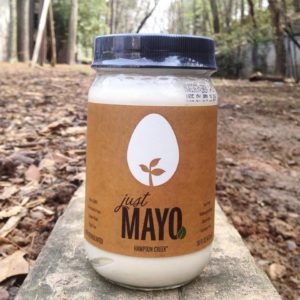It’s one thing to say you want to be “eco friendly.” It’s quite another to put your money where your mouth is and spend real dollars on greener products and services, especially in these days of tight budgets and an uncertain economy.
Yet that’s exactly what Bonnie C., a 26-year old resident of Washington, D.C., has done. Bonnie is single, lives in an apartment, and works for the U.S. Government. Here’s her story:
“I read a blog post of yours last year encouraging readers to redirect $1000 in spending to green purchases. This really struck me, and I decided to try it. I hit $1000 in December when I installed my own programmable thermostat. Here’s how I did it:
BONNIE’S BIG GREEN SHIFTS
Used furniture (sofa, dining table, patio table, TV, TV cabinet): $340, but the TV and cabinet were free!
Used Bike: $250
Garden Plot, tools, soil: $200
Organic Food: $75
Glass food containers: $40
Organic Body Products: $5 (but I’ve only run out of toothpaste, so I expect this number to grow)
No VOC Paint: $40
CFL Lightbulbs: $20
Green Cleaning Products: $25
Programmable Thermostat: $34
Total: $1029
Even though I live in an apartment, I installed the thermostat and painted – I’ll change them back when I move out.
I think it’s also interesting to note that most of these purchases saved me money. I’m 26, and I don’t have a large budget to reallocate, but by buying used items, I must have saved hundreds. The lightbulbs and thermostat will save me money, AND I don’t have to get out of bed in a cold house! I also bought a fuel-efficient Honda Fit that gets about 34 mpg on average for my typical commute, but 37-38 on long road trips.
This year I’m planning to shift more spending towards food and beauty products. I’m also trying to get a roommate, which will not only cut down on expenses, but house 2 people using about the same energy as 1.
Most of these were really easy changes, but I’m still getting over sticker shock of organic food and beauty products.
Changing out the thermostat was surprisingly easy. Yes, there were tons of poorly labeled wires, but we followed the directions carefully and it only took about 30 minutes.
Next I’m looking for a roommate! I’m also going to try to get into composting. And I’ll keep migrating to better food and beauty products.”
Bonnie’s also going to keep working on her boyfriend, who was helpful if skeptical. “He was reluctant at first,” she says, “but had a positive view after we finished those projects (installing the thermostat and setting up the garden plot).” I’m still trying to get him into better toiletries and food, but he was a quick sell on green cleaning products!”
Thanks for blogging and motivating me!”
Bonnie
As Bonnie knows, every dollar you shift makes a difference. The way you spend your money is your first line of defense against products that contain toxic ingredients or waste energy. Just as importantly, buying “green” encourages companies to reduce pollution and use water and other natural resources with greater care. Plus, choosing more environmental options often saves you money immediately. For all these reasons, the Big Green Purse One in a Million campaign inspires people to set a goal of shifting at least $1,000 of money they’d spend anyway on the most environmentally-friendly products available.
Thousands of people have already committed to shifting their spending. Why don’t you? You can sign up here.

















3 thoughts on “Washington, D.C. Woman Shifts $1,029 of Her Household Budget to Go Green”
Great story, Bonnie, and thanks for sharing the breakdown of your expenses. I was so inspired by this idea, after I signed up I wrote about it on my blog this morning!
Bonnie did a great job. This article definitely proves that when one wants to go green then it should start in each one of us. With that we should be careful in buying and installing things in our home. Products that will help consumers or users to lower their home energy bills while protecting the environment such as window tints are indeed very essential nowadays. While most window films are for reducing solar heat gain in the summer, low-e films both block summer heat and improve winter heat retention. . Reputable site such as http://www.TintBuyer.com informs consumers about the relevant facts on window tints such as type of tints, quotations and will help you locate the best professional tinter near your area.
Kudos to her for supporting the green advocacy! Not so many have made a move to make this advocacy happen.
Comments are closed.